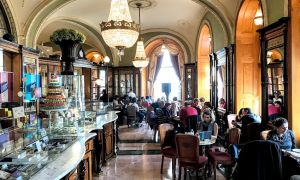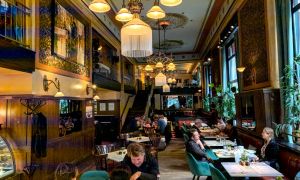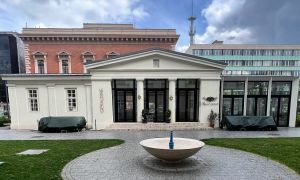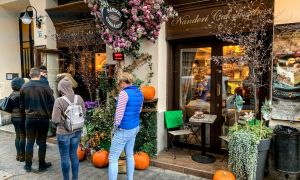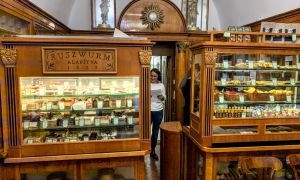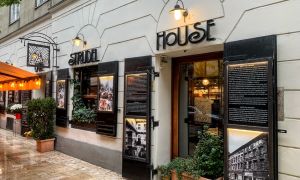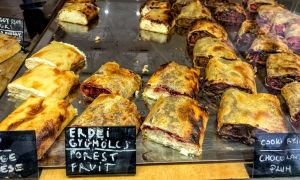Before long, you'll stumble into a pastry shop (cukrászda) in Budapest. The city's vibrant pastry culture harks back to the period of Austria-Hungary (1867-1918) when people started to socialize over luscious cakes and rich tortes. Most places listed below serve both traditional Hungarian cakes such as Dobos and Esterházy and contemporary concoctions. Note that Cafe Gerbeaud and Ruszwurm are usually mobbed by tourists; the neighborhood favorites (Auguszt, Nándori, Sommer) will better convey a sense of place and aren't so crowded.
Gerbeaud is a historic pastry shop and café in Budapest's downtown. It was Swiss-Hungarian patissier Emil Gerbeaud, who, after taking over the business in 1884, revolutionized the Hungarian confectionery industry with inventive sweets and pastries.
Today, still, Gerbeaud puts out some of the best traditional Austro-Hungarian pastries, including Dobos, Esterházy, and Sacher tortes, krémes, and the namesake Gerbeaud cake. You can also try two of their signature treats: konyakmeggy, a brandied sour cherry bonbon enclosed by a chocolate shell, and macskanyelv, a milk chocolate shaped like a cat’s tongue.
The inside is lavishly decorated with crystal chandeliers, marble-topped tables, and cherrywood paneling. Gerbeaud was the see-and-be-seen hangout for Budapest's upper crust; it maintained an air of splendor even in the Communist era (1947-1989), under national ownership and a less Western-sounding name (Vörösmarty Cukrászda).
Today, Gerbeaud is mainly a tourist attraction, but I recommend you stop by for the pastries and a glimpse of the city's now-vanished coffeehouse culture. Part of the experience is basking in the historic glow of the space, but note that all to-go orders are half-priced.

